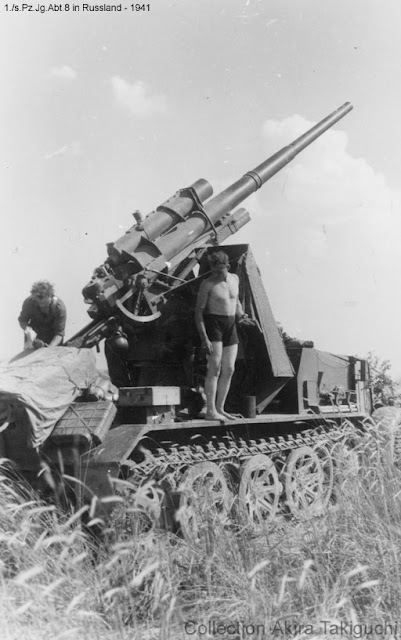From the owner of these pictures, Akira Takiguchi: Panzerkampfwagen III mit Schachtellaufwerk on a flatcar. Two of this rare tank with experimental running gear are seen. These tanks were used in shooting a propaganda movie (the most recent Waffen-Arsenal Panzer III book has several photos from this grouping, including this very picture. How I wish they could have been able to reproduce the photos in better quality!).
Several years after I had acquired the first picture, I was able to acquire a larger grouping with more pictures, like this one - a true gem!
Yet more years has passed... and today, finally, again, "seek, then it will be found!" This picture proves that Panzerkampfwagen III mit Schachtellaufwerk were produced at least three!
The Germans were in a race to re-arm their army and get everything in place for the anticipated war. They were in the place that the US Army would be in 1942-43 - volume over pure quality. Despite having a central planning office they did not use nearly as many standardized components as the Americans (for instance). Each manufacturer used the components they saw fit within certain guidelines. Plus, as mentioned, the interleaved suspension is technically superior for ride and weight distribution, but it's a maintenace headache in poor conditions. So, yes there were "better" suspensions available, but "good enough" beat "perfect".
Schachtellaufwerk was the preferred German tracked vehicle suspension. It was employed on more then 50,000 3/4 track vehicles from 1934 onward plus all German tanks designed after 1941. this overlapping road wheels gave a smother ride. But this "technically" better solution came at the cost of complexity and made maintenance difficult. With the overlapping wheels you increase the number of individual wheels and suspension units required. Adding to production requirements and the maintenance load. Plus to carry out maintenance on the inside wheels or the suspension units you need to remove the outside wheels to get access. Mud also tended to clog between the overlapping wheels impacting on mobility, especially when it froze. Not good if the Russians were coming.
Source :
http://www.history.jp/wehrmacht/008a.htm
http://warships1discussionboards.yuku.com/topic/25023/WWII-Vehicle-Suspension-Why-not-use-existing-technology#.VsOFR0Aprgw











































